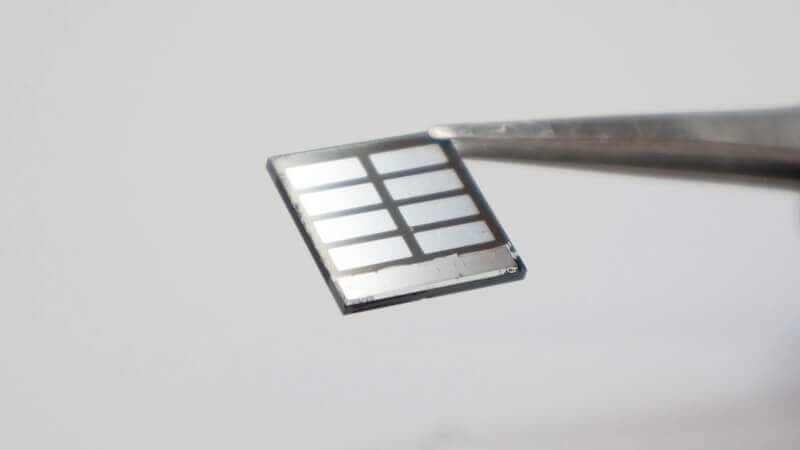
Hong Kong researchers have developed a method that significantly increases the efficiency and durability of perovskite solar cells. To do this, they treated the solar cells at the molecular level.
Researchers at the Hong Kong University of Science and Technology (HKUST) have a novel molecular treatment developedwhich significantly improves the efficiency and durability of perovskite solar cells. The discovery could accelerate industrial production of renewable energy.
Perovskite is a promising material for photovoltaic systems that can convert light into electricity. The researchers investigated passivation methods to reduce the number of defects in the materials. They focused on “amino-silane” molecules to improve the solar cells.
Perovskite solar cells achieve record values through passivation
Passivation is crucial for increasing the efficiency of perovskite solar cells. But previous methods did not lead to long-term stability. For the first time, the team showed how different amines can improve the surfaces of perovskite films. Using various methods, they identified molecules that significantly increase the photoluminescence quantum yield.
This indicates fewer defects. The method is crucial for the development of tandem solar cells that combine different layers with different band gaps. This means systems can make optimal use of the entire solar spectrum. In experiments, the team achieved the best results reported to date in terms of energy conversion efficiency.
Cells still perform well after 1,500 hours
The long-term stability of the passivated cells was also apparently convincing. Because under a standardized test protocol, the maximum power point efficiency (MPP) and the energy conversion efficiency (PCE) remained stable even after 1,500 hours. Professor Lin Yen-Hung emphasized that the treatment not only improves efficiency and durability, but is also compatible with industrial production.
The similarity to existing processes in the semiconductor industry suggests that the method can be easily integrated into existing manufacturing processes. These developments could pave the way for broader application of perovskite solar cells and advance the use of renewable energy worldwide.
Also interesting:
- Solar revolution? Super black wood absorbs almost 100 percent light.
- Researchers are increasing the efficiency of tandem solar cells – with a new coating
- Storage modules: Expanding solar storage is as easy as stacking building blocks
- Researchers are making environmentally friendly batteries from old solar panels
The post Molecular treatment: Researcher improves perovskite solar cells by Felix Baumann appeared first on BASIC thinking. Follow us too Facebook, Twitter and Instagram.
As a Tech Industry expert, I am excited about the advancements being made in molecular treatments for improving perovskite solar cells. Perovskite solar cells have shown great promise in recent years due to their high efficiency and low cost, but they have also faced challenges such as stability issues.
The research being done to improve perovskite solar cells using molecular treatments demonstrates the potential for enhancing the performance and longevity of these cells. By utilizing molecular treatments, researchers can fine-tune the properties of perovskite materials, leading to better efficiency and stability.
This development is a significant step forward in the field of renewable energy technology, as it brings us closer to achieving more efficient and affordable solar power solutions. I look forward to seeing how these advancements in molecular treatments will further revolutionize the solar energy industry and contribute to a more sustainable future.
Credits